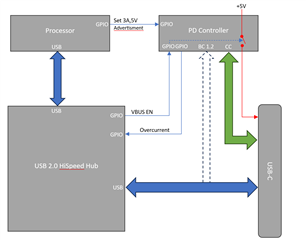Other Parts Discussed in Thread: TPS65988
Hi
I'm currently evaluating some PD controllers for our USB-C port. The data will be provided by a USB 2.0 Hi Speed Hub which should also enable VBUS through a GPIO.
My question is, is it possible to configure one GPIO as an enable input? The only configuration I've found was the Fault_Condition_Active_Low_Event.
Best regards,
Sebi



